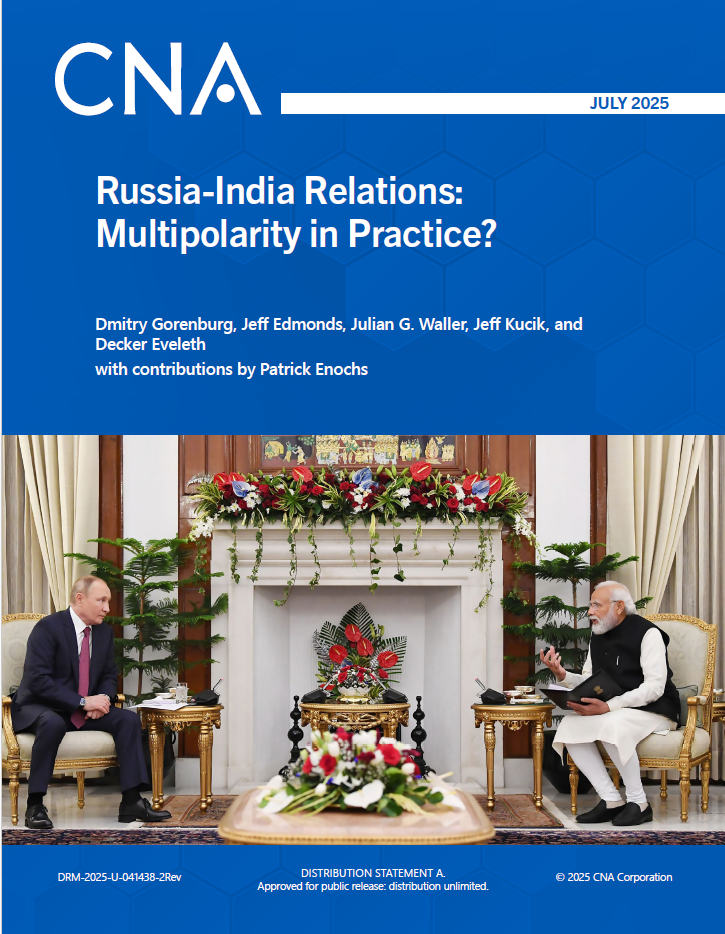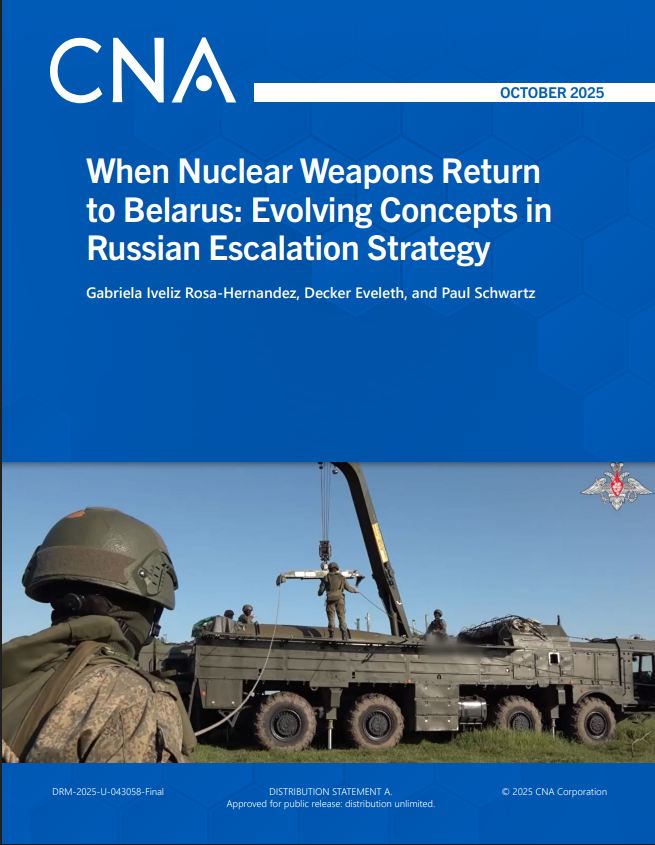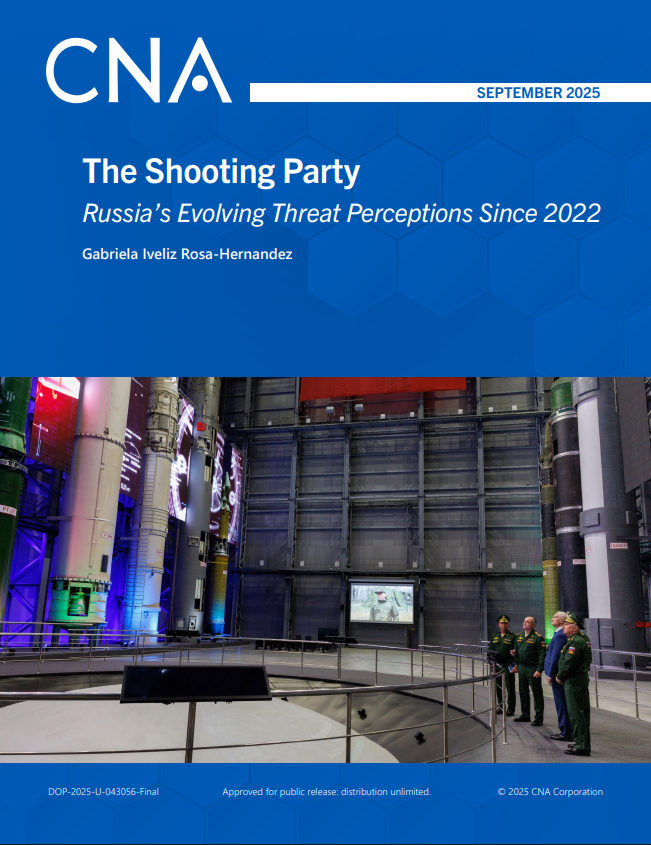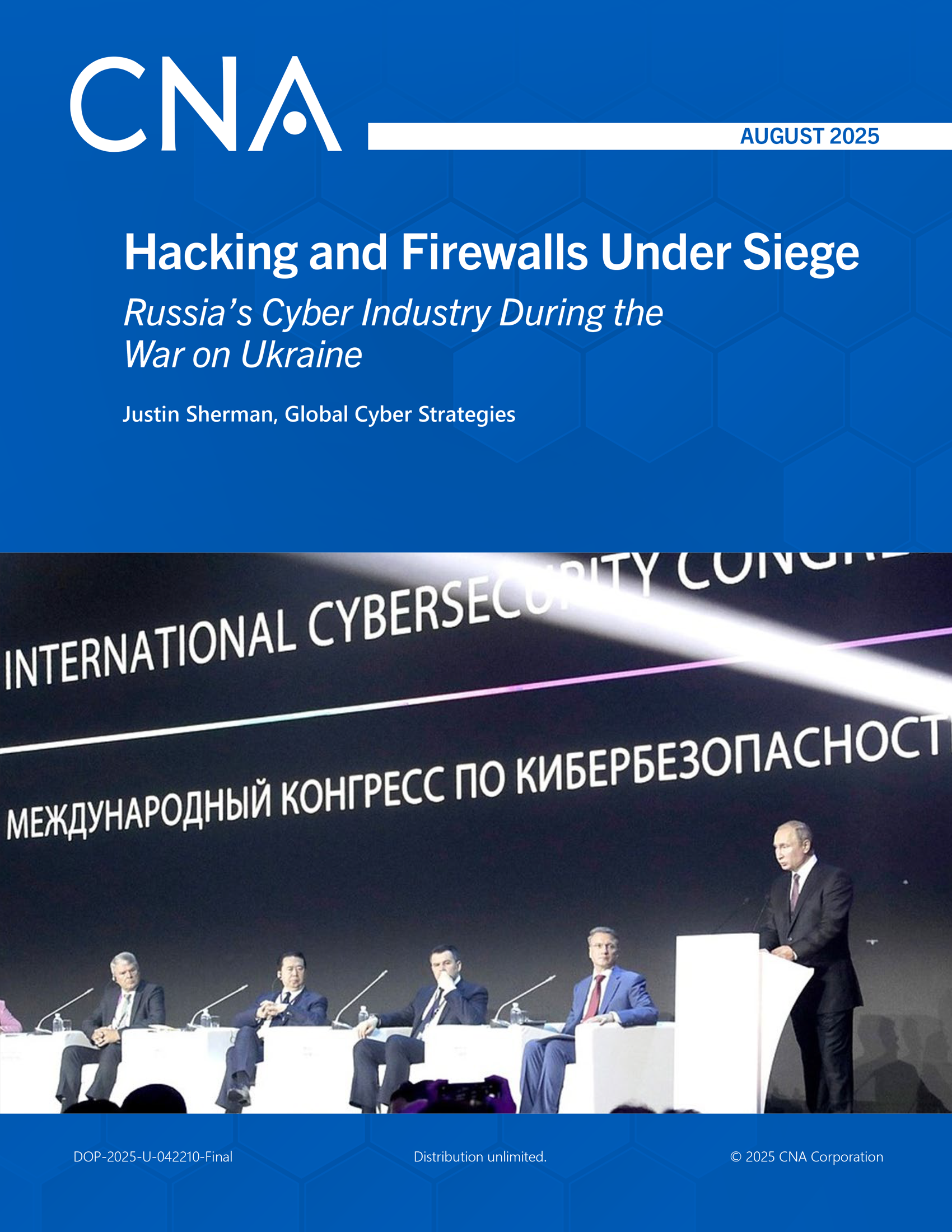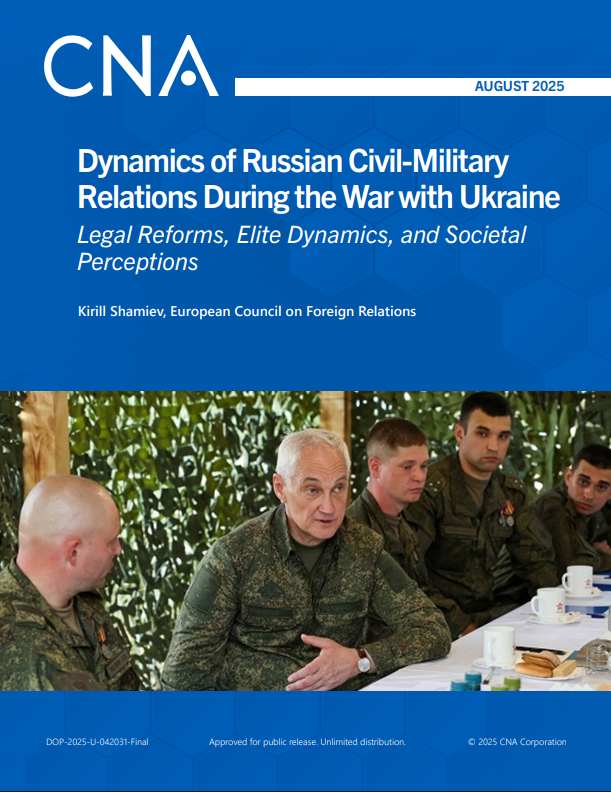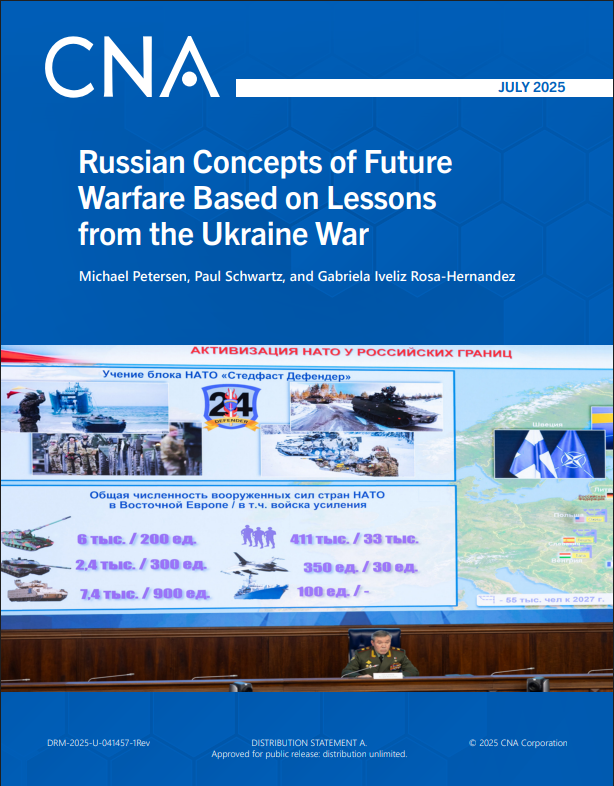Executive Summary
Since the start of the Russia-Ukraine war in 2022, the relationship between Russia and India has been an area of increased research interest, reflecting growing concern with the global trend toward great power competition across multiple poles. This report examines this relationship by analyzing a variety of indicators of trends in political, military, and economic cooperation. We present shifts in these three relationship dimensions in light of both historical trends and the recent past. In doing so, we identify constraints and drivers of the relationship, then use an indicator-based method to make controlled comparisons across and within relationship dimensions.
Major categories for these indicators include the following:
- Political elements, such as policy coordination mechanisms, public diplomacy, and elite interactions
- Military elements, such as military diplomacy, military cooperation, technical cooperation, exercises and training, coordination and information sharing, and basing and access
- Economic elements, such as economic coordination, institutional linkages, cross-border trade, investments, loans, and engagement in strategic sectors, such as oil
Key findings
The Russia-India relationship has largely held steady in recent years, despite the stresses caused by Russia’s invasion of Ukraine and its subsequent orientation away from the West and further toward China. The direct effects of the Russia-Ukraine war have been uneven. India initially limited its political and military ties to Russia as it sought to maintain a relationship with Russia while avoiding alienating key Western partners. At the same time, India has consistently refused to adopt the Western position on the Russia-Ukraine war, instead issuing evenhanded calls for the end of hostilities. Over time, as Western unity in policy toward Russia began to fray, India became less concerned about Western perceptions and reactivated its relationships with Russia in these spheres.
In the political dimension, strong ties between elites in both countries reflect continuity from the Soviet era. The warm personal relationship between President Vladimir Putin and Prime Minister Narendra Modi has had a stabilizing effect during a period of wartime uncertainty and has cushioned the relationship between the countries from potential deterioration caused by the severe Western sanctions regime. Statements of civilizational compatibility, which are regularly made by elites on both sides, need to be taken seriously, considering that Russian and Indian political leaders share illiberal, nationalist framings of both global politics and domestic cohesion.
The military relationship has largely held steady, with some decline in military-technical cooperation in recent years. Various efforts to expand military exercises—much touted in the 2010s—have largely stagnated over the past five years. Although the countries continue to pursue technical cooperation, there has been a pattern of building great expectations through agreements and joint statements at bilateral leader meetings, then trying again sometime later after nothing develops. Military-technical cooperation is likely to continue to decline for two reasons: India is pursuing domestic production, and Russia is limiting exports because it is focused on production for the war in Ukraine (and will likely focus on domestic military reconstitution in the future). Joint design projects, seen as an area of high potential a decade ago, are largely in the past now, with each side going its own way on new designs of missiles and aircraft. What remains is a focus on the continuation of licensed production in India of various Russian-designed weapons and platforms.
The relationship has improved the most in the economic sphere. Russia-India economic cooperation is booming in terms of bilateral trade and their combined efforts to ease financial transactions with one another. Economic ties between the two countries have strengthened because Russia has reoriented away from the West and needs new markets for its petroleum products. Total trade between Russia and India grew more than 30 percent in the past year, and both countries share an interest in distancing themselves from the US dollar. These two trends, driven largely by the war in Ukraine and India’s high energy demands, will likely continue. As trade grows between the countries, they are seeking financial integration outside the US dollar payment structure. Challenges hindering further cooperation include a serious trade imbalance in Russia’s favor, India’s concerns about potential secondary sanctions from the West, and India’s wariness about too much involvement in multilateral arrangements (e.g., BRICS (an intergovernmental organization that includes Brazil, Russia, India, China, South Africa, Egypt, Ethiopia, Indonesia, Iran, and the United Arab Emirates), the Shanghai Cooperation Organization (SCO)) that it perceives to be dominated by China.
Implications
The Russia-India relationship is stable, but not nearly as close as Russia’s relationships with key partners such as China or Iran. Russian leaders are eager to maintain a strong relationship, considering that India plays an important role as a trendsetter for other states in the Global South. India likewise sees the relationship with Russia as visible proof of its commitment to a multipolar global order. Although India understands that the US-India relationship is a critical one, it does not believe it must sacrifice other foreign policy ties to maintain its connection to the US, at least not with another regional great power such as Russia. India maintains a considerable interest in continuing good relations with the United States, but it does not see Russia as an adversary and has no problem with simultaneously pushing for similarly good relations with Russia.
Any US strategies attempting to break apart the Russia-India relationship would have to focus on substantive reasons for India to turn away based on material interests; moralizing or emphasizing Russia’s pariah status is unlikely to be compelling to current Indian elites. Although positive interpersonal relations between Putin and Modi help to drive the relationship, a leadership change would be unlikely to significantly shift its overall trajectory, given the structural drivers of the relationship and its positive history.
India is highly pragmatic in its military ties with Russia. Although it has canceled potential arms deals with Russia since Russia’s invasion of Ukraine, it did not do so to punish Russia for its actions. Instead, the cancellations resulted from concerns about quality and Russia’s ability to meet delivery targets, plus a general desire to build more in India. Given that India is focused on domestic production, India’s arms import market is declining and will likely shrink further over time; if Russia is to remain competitive, it will have to provide either the most advanced equipment or large discounts and extensive offsets on older equipment. Military-technical cooperation is likely to continue to decline, and bilateral military exercises will likely remain limited in number and confined to relatively basic activities. As a result, the symbolism of bilateral military relations may become more important than actual concrete achievements.
Although US sanctions have helped strengthen Russia’s economic ties with India, Indian firms have limited their trade with Russia because of the threat of secondary sanctions on countries and companies doing business with Russia. The economic relationship is also constrained by India’s swelling national trade deficit, which is due in part to its trade imbalance with Russia. Further deepening of Russia-India trade ties will likely hinge on the completion of current trade deal negotiations, in which India is attempting to secure more favorable terms for its exporters. Without a new deal, the relatively one-sided trade relationship may cause tensions between the two, limiting how much further the relationship can grow. The lack of an investment treaty also remains a barrier because both Russia and India suffer from shortfalls of infrastructure investment.
Download reportApproved for public release: distribution unlimited.
Details
- Pages: 74
- Document Number: DRM-2025-U-041438-2Rev
- Publication Date: 8/5/2025
